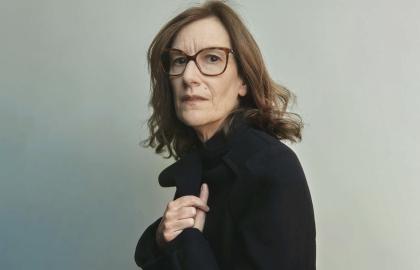Unrelated, Joanna Hogg’s first film, made in 2007, already contains the seeds of the work to come. It follows Anna, in her forties, as she joins a couple of friends in Italy. Like most of Joanna Hogg’s heroines, she is going through a period of existential crisis. Her holiday will be a chance for her to think about her future. In the first part of the film, Anna is only shown in the company of her friends’ soon-to-be thirty-year-old children. It takes a long time before her friend points out the embarrassment that it causes her. With younger people, Anna finds a way of blossoming and rediscovering a kind of youth she doesn’t want to leave behind. She doesn’t seem to want to grow old in the same way as the other adults in the film. After several heartbreaks, she finally confronts her problems and leaves Italy radiant, as if she had (re)found the right version of herself, somewhere between her memories and her desires: Anna is one of the first ageless women to populate Joanna Hogg’s cinema.
Exhibition, made in 2013, highlights another essential element of her films up to Eternal Daughter: home is the place where the self is rebuilt from memories and the passage of time. The memories don’t just come back to D. (Viv Albertine), the film's heroine in crisis. They haunt the couple’s house, which is about to be sold (a memorable spectral shot shows the couple climbing the stairs on their wedding day), just as in Eternal Daughter, where memories and ghosts of the past circulate in the manor house that once belonged to Julie's (Tilda Swinton) family. This is why Joanna Hogg uses both long shots to convey the raw material of her films — a work on temporality — and short fragments of memories to advance the narrative and the characters’ intimate processes.

It was with The Souvenir and its sequel, The Souvenir – Part II, both selected for the Directors’ Fortnight at Cannes in 2021, that Joanna Hogg’s cinema was truly discovered outside the UK. In this semi-autobiographical diptych, Joanna Hogg takes a two-pronged approach, returning to the past and to a memory that is both painful and fundamental. In the first part, she tells the story bit by bit of her relationship with an unstable man who was addicted to cocaine at the time of her film studies. In the second part, she recounts the grief that followed, which for her was accompanied by a creative process. In this respect, The Souvenir is a highly disconcerting diptych: where the first film is almost a chronicle at the crossroads between naturalism and meticulous impressionism, the second is as rough and disjointed as the equally painful creative process of Julie Harte, Joanna Hogg’s fictional double with whom she shares the same initials.
This idea of the double and of repetition, intrinsically linked to reflections on cinema and on the relationship between reality and fiction, is one of the guiding principles of Joanna Hogg’s work. As we have said, it is echoed in the filmmaker’s relationship with age, time and femininity. In The Souvenir, Joanna Hogg has her fictional double played by Honor Swinton Byrne, the daughter of Tilda Swinton, a childhood friend who starred in her graduation film Caprice. Tilda Swinton plays Julie’s mother in The Souvenir. Each of these three women is a kind of double of the others, across the ages and the screens. In Eternal Daughter, this comes full circle in at least two different ways, and the work of assimilation is accomplished. There is something of both the Russian doll and the hall of mirrors in the way Joanna Hogg develops her films and her cinema. The short film Caprice already foreshadowed this type of construction, with its character of a naive young woman climbing the ladder of a fashion magazine in a dream, only to return in the opposite direction in reality. And The Souvenir I and II are the most striking example of this, if only for their use of film within film and the parallel drawn between reality and fiction. The final shot of The Souvenir - Part II reminds us of this.

In Eternal Daughter, Joanna Hogg takes an even more radical approach to filming a collection of memories from a large Gothic mansion before sending the dead back to the afterlife. Memory is both the subject and the purpose of the film. It moves from one state to another: from sometimes painful simplicity to bearable memory. Because there is nothing more complicated in life than losing a loved one and enduring the time it takes for a semblance of mourning, which is sometimes impossible, to take place so that the dead can live with us without haunting us. Joanna Hogg works this dark material of grief with great finesse. Eternal Daughter is first and foremost a time-travelling film of memory. Its originality also lies in its dual references to Kubrick and Hitchcock in its use of space (a house, of course) and its Gothic sophistication, which could have worked as a closed circuit but instead results in a great intimate fresco. Without this openness towards time and memories, Eternal Daughter would not have gone beyond the metaphor that makes the invisibility of grief visible by unfolding what is secretly at play in Julie’s intimate labyrinth. Joanna Hogg’s cinema travels through the ages, where her heroines reinvent themselves and reclaim time in order to move forward by healing open wounds.
Guillaume Richard and Thibaut Grégoire
Le Rayon Vert - Online film review





